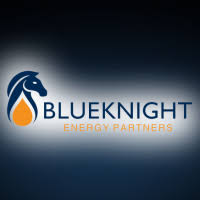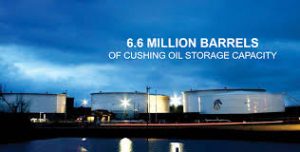
While companies respond to the massive drop in oil prices, Tulsa’s Blueknight Energy Partners LP reports business was good in 2019, so good it made profits compared to the losses suffered in 2018. And it anticipates better income due to the demand for storage.
The company reported its fourth quarter net income totaled $4.3 million, operating income of $7.9 million and adjusted EBITDA of $16 million. Full year 2019 net income was $18.4 million and its operating income for the year was $34.2 million while the adjusted EBITDA for the year totaled $63.6 million.
The fourth quarter net income of $4.3 million compared to a net loss of nearly $51 million for the same period in 2018.
The increase was driven by 2018 impairment charges related to the Oklahoma pipeline system and the Cimarron Express pipeline project and stronger 2019 performance across the three crude oil business segments, according to the company announcement.
Adjusted earnings before interest, taxes, depreciation and amortization in the last quarter of 2019 was $16.0 million as compared to $13.9 million for the same period in 2018. The 15% year-over-year increase in Adjusted EBITDA was primarily due to stronger performance across the three crude oil business segments.
“I am proud to say the business performed well throughout the year and we accomplished many of our objectives in 2019,” said Mark Hurley, Chief Executive Officer.
Because the price of oil is in the $20 range and demand is growing for storage capability, Blueknight Energy anticipates more income because of its storage facilities in Cushing, Oklahoma.

“We are uniquely positioned for 2020 and beyond with our enhanced financial position, the recent increase in crude oil storage demand in Cushing and the fact that over 90% of our revenues in terminalling services, which represent 95% of our total operating margin, are supported by take-or-pay contractual agreements,” added Hurley. In addition, the other key differentiating factor for us relative to traditional oil and gas midstream entities is that approximately 80% of our total operating margin is derived from our asphalt terminalling services segment which is linked to infrastructure and highway construction activity and not dependent on regional upstream activities. We believe this current market environment is an opportunity for Blueknight to showcase the stability and strength of its business and portfolio to existing and potential new investors.”
The company is already reporting that at the midpoint of the range, total expected capital expenditures for the year are approximately 20% lower than 2019.
Asphalt Terminalling Services. Total operating margin, excluding depreciation and amortization, decreased $0.8 million for the three months ended December 31, 2019, as compared to the same period in 2018 primarily due to shifting tank cleaning expenses to the fourth quarter of 2019.
Crude Oil Terminalling Services. Total operating margin, excluding depreciation and amortization, increased $0.6 million for the three months ended December 31, 2019, compared to the same period in 2018. The year-over-year increase was led by higher contracted storage and stronger throughput volume, an increase of 25% and 41%, respectively, versus the same period in 2018.
Crude Oil Pipeline Services. Total operating margin, excluding depreciation and amortization, increased $3.0 million for the three months ended December 31, 2019, compared to the same period in 2018 due to improved margins primarily in the Partnership’s crude oil marketing business and higher per barrel transportation fees despite lower fourth quarter 2019 volumes of approximately 20 thousand barrels per day.
Crude Oil Trucking Services. Total operating margin, excluding depreciation and amortization, increased $0.1 million for the three months ended December 31, 2019, compared to the same period in 2018. While average volumes decreased to approximately 23 thousand barrels per day for the fourth quarter of 2019, margins improved due to higher rates from longer hauls.
For the three months ended December 31, 2019, distributable cash flow was $11.0 million, as compared to $6.7 million for the same period in 2018, a 66% increase year-over-year. Net capital expenditures for the fourth quarter of 2019 were $3.3 million, which included $1.7 million of net maintenance capital.
The Partnership ended the fourth quarter of 2019 with total debt of $256.6 million, which resulted in a leverage ratio of 4.05 times, and $0.6 million of cash. As of March 23, 2020, total debt was $274.6 million, and cash was $3.0 million.
Source: Business Wire




